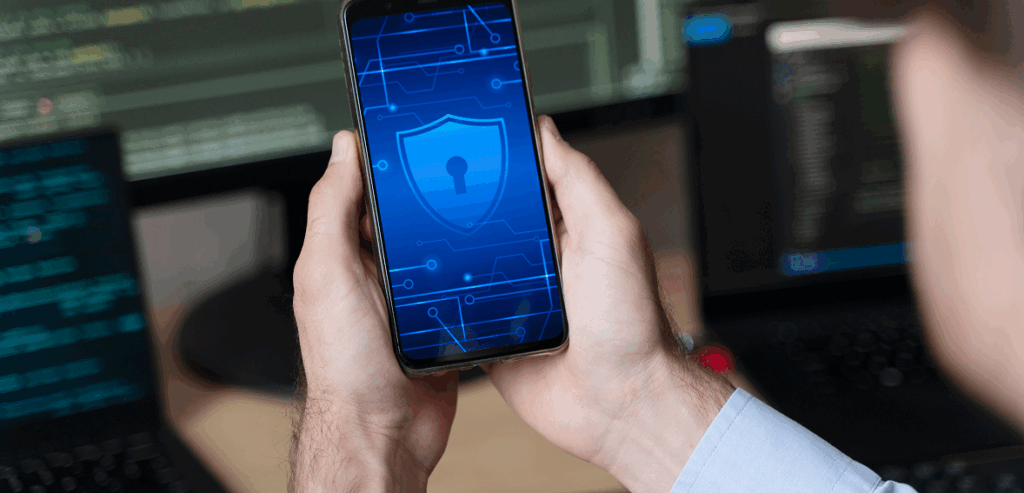
Navigating Innovation and Protecting the Digital World
The Fast-Moving Digital Landscape
Technology is advancing at a pace that once seemed unimaginable. From artificial intelligence to cloud computing and smart devices, the digital age continues to redefine how people live, work, and interact. With each innovation, however, comes new security challenges. The more interconnected our systems become, the more vulnerable they are to cyber threats. This duality makes security and tech updates inseparable elements of modern life.
Security updates ensure that systems remain resilient against evolving threats, while technology updates push innovation forward, providing better performance, enhanced features, and improved user experiences. The relationship between these two spheres is dynamic, with security protecting technology, and technology creating new frontiers that security must safeguard.
This article provides an in-depth exploration of security and tech updates. We will examine their importance, trace their evolution, understand their interdependence, review recent innovations, highlight best practices for organizations and individuals, and look at what the future holds.
Understanding Security Updates
Security updates are designed to address vulnerabilities in software, hardware, or networks. No system is perfect, and as technology evolves, malicious actors constantly look for weaknesses to exploit. Security updates act as patches, closing these gaps before they can be used for attacks.
These updates often fix coding errors, enhance encryption methods, or disable outdated protocols. They are crucial because cybercriminals quickly take advantage of known vulnerabilities. When developers release a patch, attackers frequently target users who have not yet applied it, knowing that unprotected systems are easier to breach.
For individuals, security updates safeguard personal data, prevent malware infections, and protect financial information. For organizations, they ensure compliance with regulations, maintain customer trust, and reduce the risk of costly breaches. In both cases, ignoring updates is like leaving the front door unlocked in a dangerous neighborhood.
Understanding Technology Updates
Technology updates extend beyond security, focusing on performance, usability, and functionality. They introduce new features, fix bugs, and adapt systems to changing environments. For example, smartphone operating system updates may include improved battery management, redesigned user interfaces, or expanded app compatibility.
Technology updates are not just about convenience. They often support innovation in broader industries. Cloud service updates can introduce new automation tools, while hardware firmware updates can unlock enhanced processing power. Without regular updates, technology quickly becomes obsolete, limiting efficiency and competitiveness.
Importantly, technology updates and security updates are not separate. Many technology updates incorporate enhanced security measures, while security patches often improve performance indirectly. Together, they form the foundation of digital progress.
The Evolution of Security and Tech Updates
In the early days of computing, updates were rare and cumbersome. Users had to manually install patches using floppy disks or CDs, and many systems remained outdated for years. Cybersecurity was not yet a mainstream concern, as most networks were closed and localized.
As the internet expanded, the threat landscape changed dramatically. Worms, viruses, and phishing attacks proliferated, creating demand for regular updates. Microsoft’s “Patch Tuesday,” established in 2003, symbolized the beginning of systematic update cycles, providing users with predictable schedules for security fixes.
The rise of smartphones, cloud computing, and Internet of Things (IoT) devices further accelerated the need for updates. Mobile operating systems like iOS and Android introduced frequent updates to meet user demands and protect against increasingly sophisticated threats.
Today, updates are often delivered automatically. Cloud-based systems push fixes in real time, ensuring rapid protection. At the same time, the frequency and complexity of updates highlight the constant race between innovation and security, with cybercriminals adapting just as quickly as developers.
Why Security and Tech Updates Matter

The importance of updates can be understood by looking at the risks of neglecting them. One of the most infamous examples was the WannaCry ransomware attack in 2017. The malware exploited a known vulnerability in Windows systems, which had already been patched by Microsoft. However, many organizations failed to install the update, leading to widespread disruption across hospitals, businesses, and governments.
This incident illustrates that ignoring updates does not only impact individual users but also carries systemic consequences. Cyberattacks can cripple critical infrastructure, disrupt supply chains, and compromise national security.
Beyond risk prevention, updates also matter for competitiveness. Businesses that keep systems updated benefit from improved performance, access to the latest features, and compliance with industry regulations. Individuals who update regularly enjoy smoother user experiences and stronger protection of personal data.
Ultimately, updates are about trust. Consumers trust that companies will protect their information, while companies rely on consumers to maintain secure systems by applying patches. This shared responsibility highlights the societal importance of updates.
The Interconnection Between Security and Technology
Security and technology are deeply interconnected. Every technological advancement creates new opportunities but also new vulnerabilities. Artificial intelligence, for example, can power advanced security systems capable of detecting anomalies in real time, but it can also be exploited to create convincing deepfakes or automate cyberattacks.
Similarly, the rapid growth of IoT devices has brought convenience and efficiency, but also an explosion of new attack surfaces. Smart home devices, if left unpatched, can be hijacked to form botnets, amplifying cyber threats globally.
This interconnection means that updates must evolve continuously. Security measures cannot remain static in a world where technology changes daily. Instead, they must adapt alongside innovation, creating a feedback loop of advancement and protection.
Recent Trends in Security & Tech Updates
Rise of Zero-Day Exploits
Zero-day exploits target vulnerabilities that are unknown to developers at the time of attack. They represent one of the most serious threats in cybersecurity because patches are not available until after the attack is discovered. The increase in zero-day attacks has forced companies to adopt proactive monitoring and faster response cycles.
Cloud and SaaS Updates
Cloud services have shifted the update paradigm by making patches seamless and often invisible to users. Instead of relying on manual updates, cloud providers push fixes automatically, reducing the risk of human error. This has set a new standard for how updates are delivered.
Mobile-First Updates
As smartphones dominate daily life, mobile updates have become critical. Companies like Apple and Google now release frequent security and technology updates, ensuring that billions of devices remain protected. The scale of mobile updates illustrates the global nature of modern cybersecurity.
AI-Powered Security Enhancements
Artificial intelligence has become integral to both detecting vulnerabilities and delivering updates. Machine learning models can identify suspicious activity, predict attack patterns, and recommend patches before damage occurs. AI has also enhanced automation, allowing faster rollout of updates across organizations.
Growing Emphasis on User Awareness
Many organizations have recognized that updates are only effective if users apply them. As a result, there is a growing emphasis on consumer education. Companies are simplifying update processes, sending alerts, and emphasizing the importance of timely action.
Challenges in Managing Security and Tech Updates

Despite their importance, updates present significant challenges.
One of the most common issues is user resistance. Many people postpone updates due to concerns about downtime, compatibility issues, or simply inconvenience. This reluctance creates vulnerabilities that cybercriminals exploit.
For organizations, managing updates across large networks is complex. Enterprises may operate thousands of devices with different configurations, making it difficult to apply patches uniformly. In some cases, updates can cause unintended disruptions to legacy systems, leading to hesitancy in adoption.
Another challenge is update fatigue. With the frequency of updates increasing, users may feel overwhelmed by constant notifications. This can lead to disengagement, where individuals ignore updates altogether.
Finally, the sheer pace of technological change makes it difficult to keep up. As soon as one vulnerability is patched, new ones emerge. This creates a constant cycle that requires significant resources and attention.
Best Practices for Security & Tech Updates
For individuals, best practices include enabling automatic updates whenever possible, regularly backing up data, and staying informed about security advisories. By adopting a proactive mindset, users can minimize risks and maintain protection.
For organizations, best practices involve implementing centralized patch management systems, conducting regular audits, and providing training to employees. Leadership must foster a culture that prioritizes updates, emphasizing their role in overall security strategy.
Developers also play a critical role. Writing secure code, conducting vulnerability testing, and maintaining transparency with users about the importance of updates ensure that products remain trustworthy. Collaboration between developers, organizations, and users is essential for success.
Future of Security & Tech Updates
Looking ahead, the future of updates will be shaped by automation, intelligence, and integration.
Artificial intelligence will increasingly drive proactive security measures, predicting vulnerabilities before they are exploited and recommending patches in real time. Updates will become more personalized, tailored to specific user needs and environments.
Automation will reduce human involvement, making updates seamless and invisible. Systems will adapt dynamically, applying patches without disrupting workflows.
Blockchain may play a role in verifying the authenticity of updates, ensuring that malicious actors cannot distribute fake patches.
In the broader context, the concept of “self-healing systems” may emerge, where software and hardware automatically identify and correct vulnerabilities without user intervention.
The future also promises more integration between security and technology. Rather than treating security as an afterthought, updates will be embedded into the design of every innovation, making resilience a core feature of digital progress.
Conclusion: Staying Ahead in a Changing World
Security and technology updates are the lifeblood of the digital age. They ensure that innovation remains safe, reliable, and sustainable. Without them, individuals and organizations would be left vulnerable to threats that grow more sophisticated by the day.
By understanding their importance, embracing best practices, and leveraging new tools, users and businesses can navigate the fast-moving digital landscape with confidence. Updates are not mere inconveniences—they are the foundation of trust, resilience, and progress.
As we move into the future, the relationship between security and technology will only grow tighter. Every innovation will demand new protections, and every protection will enable further innovation. Staying ahead requires vigilance, adaptability, and a commitment to constant improvement.
The lesson is simple: in a world defined by rapid change, those who update—both their systems and their thinking—are the ones who will thrive.